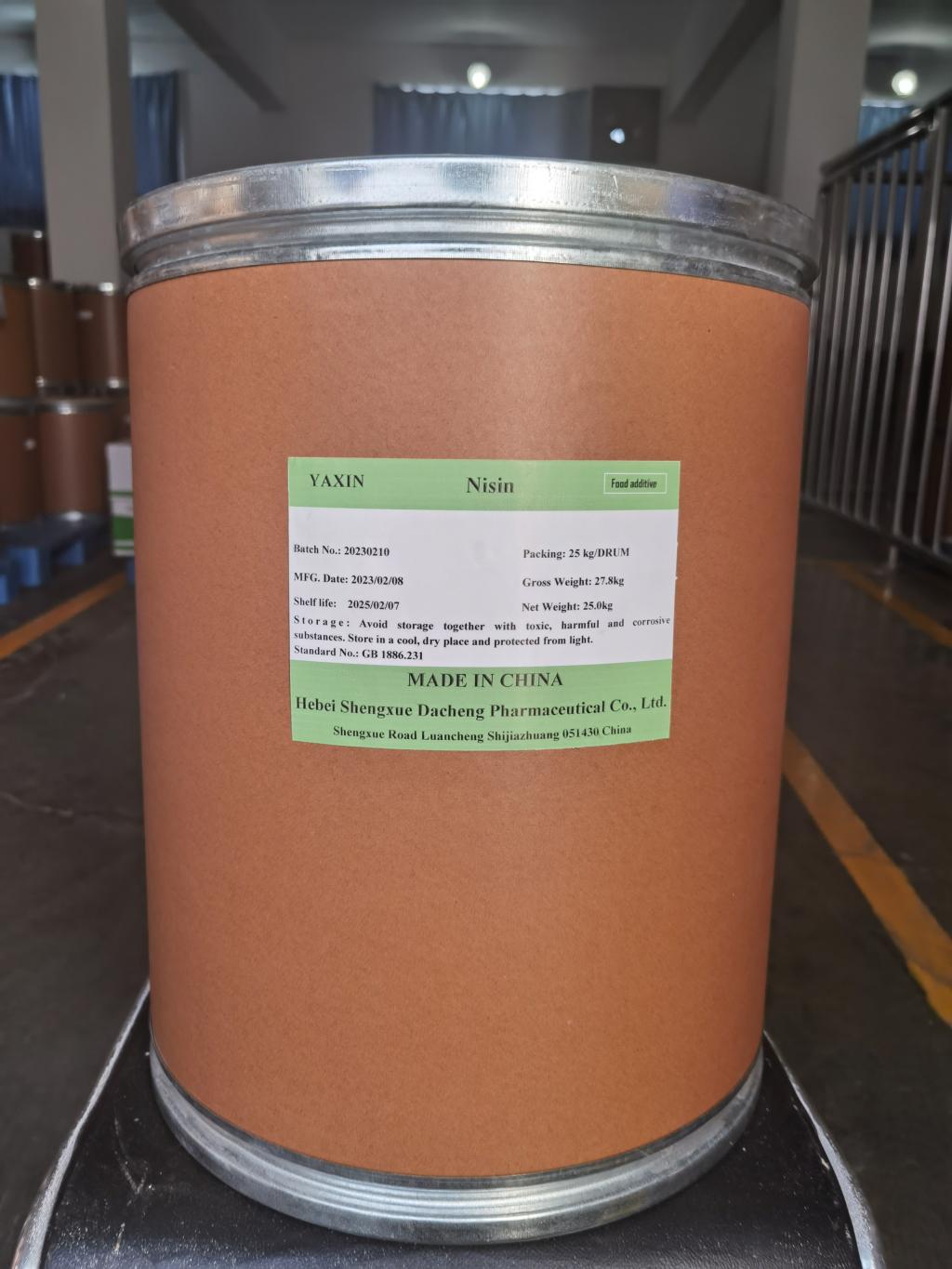Tel:+8618231198596

News
 CONTACT
CONTACT
 CONTACT
CONTACT
- Linkman:Linda Yao
- Tel: +8618231198596
- Email:linda.yao@dcpharma.cn
- Linkman:CHARLES.WANG
- Department:Overseas
- Tel: 0086 0311-85537378 0086 0311-85539701
News
Nisin's Therapeutic Promise: A Novel Approach to Infection Control
TIME:2023-12-11
I. Nisin: Nature's Antimicrobial Warrior
A. Overview of Nisin
Nisin is a small peptide produced by certain strains of lactic acid bacteria, particularly Lactococcus lactis. Discovered in the early 20th century, it has since been widely used as a food preservative due to its potent antimicrobial properties. Its mechanism of action involves disrupting bacterial cell membranes, primarily targeting Gram-positive bacteria, including notorious pathogens like Staphylococcus aureus and Streptococcus pneumoniae.
B. Safety Profile
One of nisin's distinct advantages is its safety for human consumption. Extensive studies have confirmed its harmlessness to mammalian cells, and regulatory bodies, including the U.S. Food and Drug Administration (FDA) and the European Food Safety Authority (EFSA), have granted it Generally Recognized as Safe (GRAS) status.
II. Nisin's Mechanism of Action
A. Targeting Bacterial Cell Membranes
Nisin's primary mode of action involves binding to lipid II, a precursor in bacterial cell wall synthesis. This interaction disrupts membrane integrity, leading to the leakage of cellular contents and eventual cell death. The specificity of nisin for bacterial membranes without affecting eukaryotic cells is a key factor in its therapeutic potential.
B. Impact on Antibiotic-Resistant Strains
The rise of antibiotic-resistant strains poses a global health threat. Nisin's mechanism of action, distinct from traditional antibiotics, makes it a valuable tool in combating bacterial strains resistant to conventional treatments. This section will explore studies highlighting nisin's efficacy against drug-resistant pathogens.
III. Nisin's Efficacy Against Pathogens
A. Gram-Positive Bacteria
Nisin has demonstrated remarkable efficacy against a spectrum of Gram-positive bacteria. This section will delve into specific examples, including its activity against Staphylococcus aureus, Enterococcus faecalis, and Streptococcus pneumoniae. Case studies and clinical trials showcasing nisin's potential as a therapeutic agent will be discussed.
B. Gram-Negative Bacteria
While nisin's primary activity is against Gram-positive bacteria, recent research has explored its potential against certain Gram-negative species. This section will review studies investigating the use of nisin in combination with other agents to target Gram-negative pathogens, addressing the challenges posed by their outer membrane structure.
IV. Synergistic Approaches with Antibiotics
Nisin's synergistic interactions with traditional antibiotics offer a unique strategy for enhancing the efficacy of existing treatments. Combining nisin with antibiotics can potentially lower the required antibiotic dosage, reducing the risk of side effects and mitigating the development of antibiotic resistance.
A. Mechanisms of Synergy
The article will explore the mechanisms underlying the synergy between nisin and antibiotics. This may include increased membrane permeability, enhanced drug uptake, and the prevention of biofilm formation. Examples of successful combinations and their impact on treating bacterial infections will be discussed.
V. Nisin in Biofilm Disruption
Biofilms, communities of microorganisms encased in a protective matrix, pose a significant challenge in infection control. Nisin has exhibited the ability to disrupt biofilms, making it a potential therapeutic agent for infections associated with biofilm-forming bacteria. This section will explore the mechanisms and applications of nisin in biofilm eradication.
VI. Clinical Trials and Human Applications
The translation of nisin's therapeutic promise from laboratory studies to clinical trials and potential human applications is a critical step. This section will review ongoing and completed clinical trials evaluating the safety and efficacy of nisin in treating various infections. The challenges and opportunities in moving from preclinical research to human trials will be discussed.
VII. Future Directions and Challenges
As research on nisin's therapeutic potential continues to evolve, the article will explore future directions and potential challenges in harnessing nisin for infection control. This may include advancements in delivery mechanisms, formulation optimization, and addressing regulatory considerations for its clinical use.
Conclusion:
Nisin's journey from a food preservative to a potential therapeutic agent marks a paradigm shift in infection control. As the global health landscape grapples with antibiotic resistance and the need for alternative treatments, nisin stands out as a promising candidate. This article has provided a comprehensive overview of nisin's mechanism of action, efficacy against various pathogens, and its potential applications in synergy with antibiotics and biofilm disruption. With ongoing research and clinical trials, the therapeutic promise of nisin may soon become a reality, offering a novel and effective approach to combatting infectious diseases.
Previous:Food grade nisin
Next:Nisin for food preservation
- Tel:+8618231198596
- Whatsapp:18231198596
- Chat With Skype







